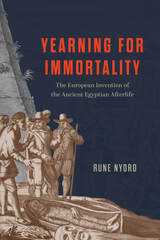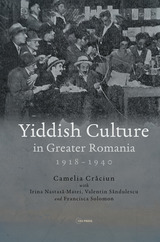5 books about approximately 370-444
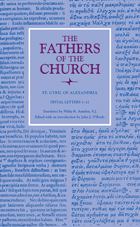
Festal Letters 1-12
St. Cyril of Alexandria
Catholic University of America Press, 2013
No description available
[more]
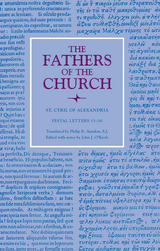
Festal Letters 13-30
St. Cyril of Alexandria
Catholic University of America Press, 2013
Twenty-nine in all, these letters cover all but three of Cyril's years as a bishop. The first twelve were published in 2009 (Fathers of the Church 118). The present volume completes the set. Festal letters were used in Alexandria primarily to announce the beginning of Lent and the date of Easter. They also served a catechetical purpose, however, allowing the Patriarch an annual opportunity to write pastorally not just about issues facing the entire see, but also about the theological issues of the day.
[more]
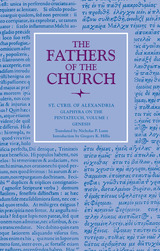
Glaphyra on the Pentateuch, Volume 1
Nicholas P. St. Cyril of Alexandria
Catholic University of America Press, 2019
Cyril of Alexandria (ca. 376–444) is best known for his defense of orthodoxy at the time of the Nestorian controversy over the nature of Christ. However, by far the larger part of Cyril’s literary output consisted of commentaries on books of both Old and New Testaments, written before the Christological debate was sparked off in 428. One of these works, of major proportions, was the so-called Glaphyra (“elegant comments”) on the Pentateuch. This comprises a total of thirteen separate “books,” or volumes: seven on Genesis, three on Exodus, and one each on Leviticus, Numbers and Deuteronomy. The comments primarily concern the narrative portions of the Pentateuch, hence the greater space given to Genesis, though a number of the legal prescriptions are also treated. This present volume, containing all seven books on Genesis, is the first of a projected two-volume set which will offer a translation of the whole Glaphyra for the first time in English. Cyril’s aims within the commentary are both theological and pastoral. His chosen method begins with a consideration of the historia. Here the Alexandrian patriarch deals with the text at the literal level. At this stage he explains any historical, cultural, and at times even linguistic and textual issues presented within the passage, which is then followed by some theological instruction or lessons of a more practical nature based upon the literal interpretation. The exposition then moves on to the theoria. This is Cyril’s preferred term for the contemplation of the spiritual sense, that is to say, the mystery of Christ which he firmly held lay hidden beneath the surface of the Old Testament text. With great adeptness and consistency Cyril identifies elements within the ancient narratives as figures, or “types and shadows,” of the Lord Jesus Christ, the Church, and the teachings of the gospel.
[more]
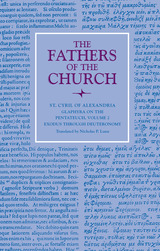
Glaphyra on the Pentateuch, Volume 2
St. Cyril of Alexandria
Catholic University of America Press, 2019
The translation of the commentary of Cyril of Alexandria (ca. 376-444) on the Pentateuch, known as the Glaphyra, or “elegant comments,” is now completed by this second volume. Volume 1 contained the whole of his remarks on Genesis, and now Volume 2 presents his comments on Exodus, Leviticus, Numbers, and Deuteronomy, along with indices for the entire work. At this early stage in his patriarchate Cyril was an avid expositor of Scripture, on books of both Testaments, possibly undertaking this work as a model and guide for the clergy under his direction. While Cyril’s other large-scale commentaries on Old Testament books, such as Isaiah and the Minor Prophets (the latter commentary also published in translation by CUA Press), followed a verse-by-verse approach, the Glaphyra is more thematic. As Cyril works through the narrative passages of the Pentateuch, he pauses to explain those elements within the text that present possible difficulties or admit alternative interpretations, and invariably concludes each section by bringing out spiritual lessons of benefit to the congregation. Many of these latter relate to Christ, since, for Cyril, a Christological reading of the Old Testament was unavoidable. While in the Glaphyra it was not Cyril’s purpose to tackle the legal passages within the Pentateuch, a task that he wished to reserve for a separate work of an entirely different character (De adoratione et cultu in spiritu et veritate, “Concerning Worship and Service in Spirit and in Truth”), he does nevertheless here depart from his own remit on occasion and deal with some of the more prominent ceremonial passages. Cyril gives considerable space, for example, to the sacrifice of the Passover lamb and the levitical ritual for the cleansing of the leper, among others. As with Volume 1, Cyril’s treatment of these books is published here for the first time in English translation.
[more]
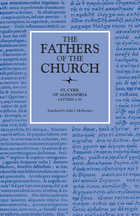
Letters 1–50
Saint Cyril of Alexandria
Catholic University of America Press, 1987
No description available
[more]
READERS
Browse our collection.
PUBLISHERS
See BiblioVault's publisher services.
STUDENT SERVICES
Files for college accessibility offices.
UChicago Accessibility Resources
home | accessibility | search | about | contact us
BiblioVault ® 2001 - 2025
The University of Chicago Press


